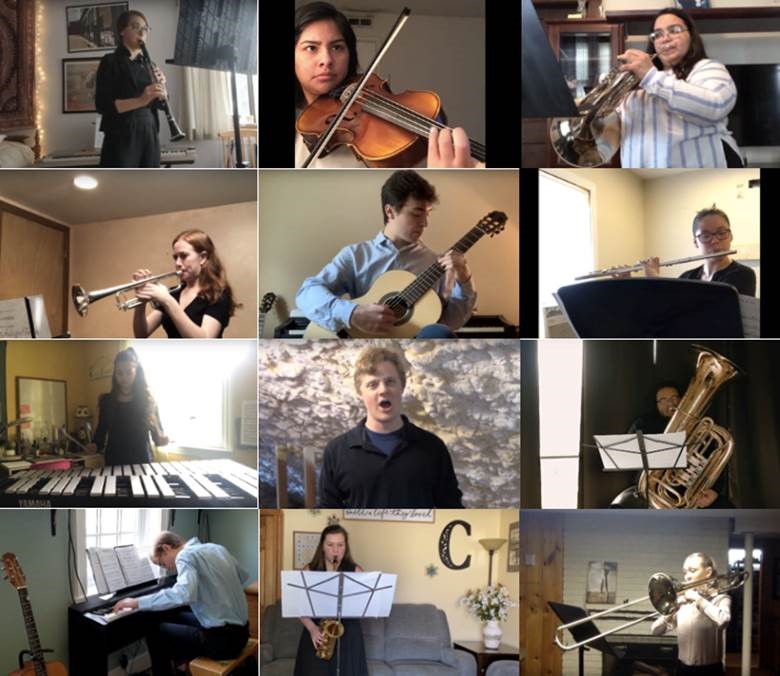- Apply
- Visit
- Request Info
- Give
Music students excel in virtual 'jury' performances
Written by Michael Rouleau
Published on May 19, 2020

While the coronavirus pandemic has shuttered museums and concert halls around the world, it hasn’t suppressed the creativity and artistic expression of undergraduate musicians at Eastern Connecticut State University. Eastern students have joined the legion of artists this spring who have adapted to the global health crisis with innovation and perseverance.
The 57 students enrolled in “Individual Music Instruction” and “Advanced Music Instruction” had to forego their typical face-to-face lessons with faculty instructors for a distanced, cloud-based approach. Their efforts came to fruition during end-of-semester virtual “jury” performances. A jury performance functions much like a final exam and, traditionally, takes place in front of a panel of faculty members.
“Robust private lessons (on WebEx, Zoom and other platforms) continued to take place even after the university went online,” said Okon Hwang, professor and chair of the Music Program. “We had to devise an innovative way to transition a traditional face-to-face jury experience to a virtual format.”
(Eric Peterson performs “Sunwalk” by Andrew York)
The new format called for students to record their final performances at home and upload them to YouTube for a juried review. They also had to fill out jury forms, which contained information on the pieces they studied and performances they participated in during the semester, and then file the PDF forms in their courses’ cloud-based filing system.
“The result was a spectacular success,” said Hwang. “I am very proud of the fact that we were able to finish this tumultuous semester with such fine results by employing ingenuity, creativity and a great community spirit in the face of overwhelming obstacles.”
Some students had access to high-quality cameras and microphones while others made do with more limited resources. “Yet all of them strove to achieve the goals they set at the beginning of the semester and we are very proud of our students’ accomplishments,” said Hwang, “particularly since we had to work through such a challenging time.”
(Olivia Lisowicz performs Beethoven Sonata Op. 10 No. 2, allegretto)
All students enrolled in Individual and Advanced Music Instruction — from freshmen to seniors — are required to take jury performances. Some students play two instruments and had to submit two jury performances.
The six jury panels include brass, percussion, piano, strings/guitar, voice and woodwinds. Each jury is composed of instructional faculty and at least two full-time faculty members who judge students’ performances on bassoon, cello, clarinet, double bass, flute, French horn, guitar, oboe, percussion (various types), piano, saxophone, trombone, trumpet, tuba/euphonium, violin, viola and voice.
Each student plays different pieces based on their skill level, and jury members grade their performances on note and rhythm accuracy, tone quality, phrasing, articulation, dynamic execution, consistency/fluency and demonstration of stylistic and periodic understanding. Jury members comment individually in the students’ jury forms.
To see videos of student and faculty performances, visit the Music Program’s YouTube channel, “Music at Eastern CT,” at https://www.youtube.com/channel/UCE7Uz8KJ7M0KP2xiHDxFIMQ.
The Music Program provides a supportive environment, individualized mentoring and high-end facilities where aspiring performers, composers and scholars can develop their talents. Coursework provides theoretical and experiential opportunities which emphasize the history, theory, performance and criticism of music and musicians from Western and non-Western traditions.


